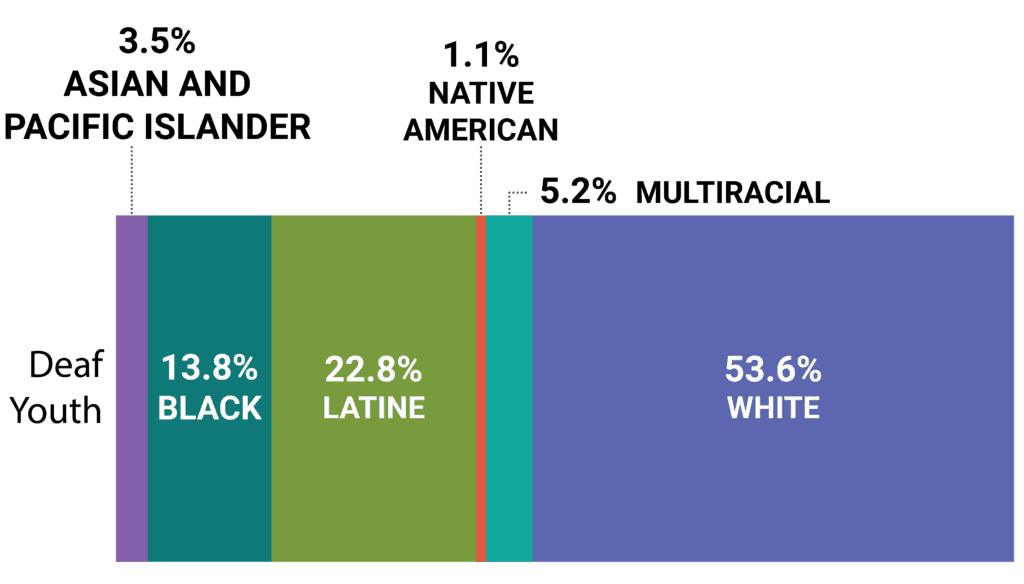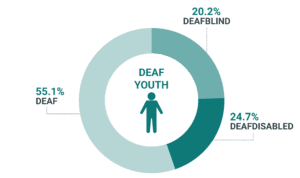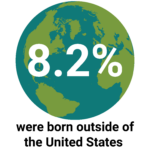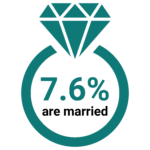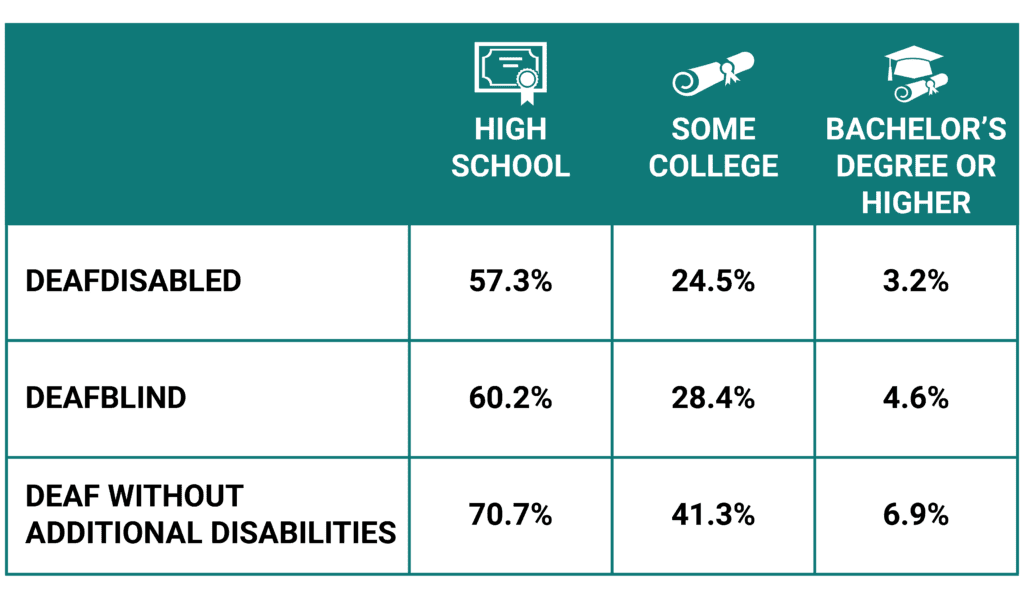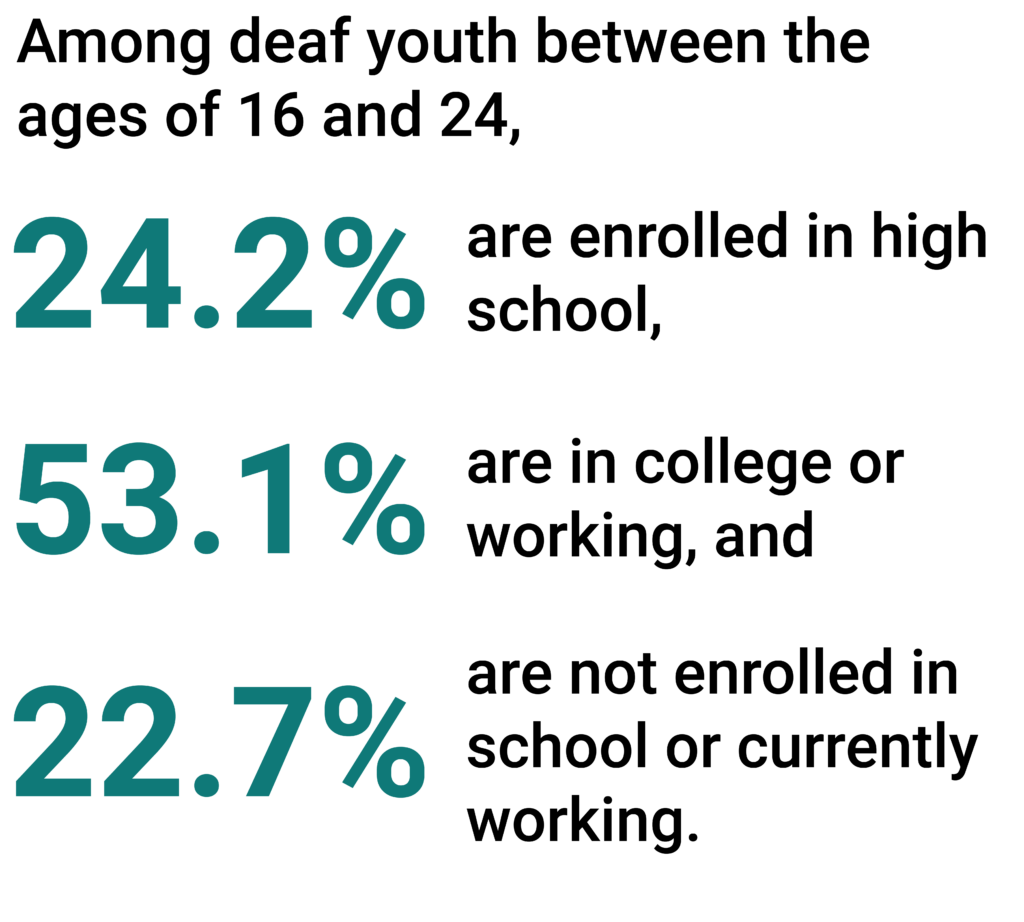Home » Resources » Research & Data » Deaf Youth: What Does the Data Tell Us?
Deaf Youth: What Does the Data Tell Us?
What Do We Know About Deaf Young People?
There are an estimated 280,000 deaf young people ages 16-24 living in the United States. They have different backgrounds than older deaf people, are more likely than their hearing peers to live in households where no one is working, and nearly half have an additional disability.
Click on any image to enlarge.
Deaf youth encounter different types of barriers in educational systems, leading to variations in educational completion rates.

How Engaged Are Deaf Youth in Postsecondary Experiences?
When young adults are neither enrolled in school nor employed, they are often referred to as “disconnected youth” or “opportunity youth.” Examining this group closely allows us to gain insights on how to effectively engage young people and provide them with equal opportunities for ongoing education and work experience.
Who Are Disconnected Deaf Youth?
Some groups of deaf people experience higher rates of disconnection from education and employment due to barriers. Disconnected deaf youth are also likely to be a caregiver for an infant, rely on government assistance, and do not have access to the internet.
It is crucial to understand that being disconnected during early adulthood has significant long-term impact on earnings, education, and overall well-being. Some deaf youth will need more support getting reconnected with postsecondary opportunities. By addressing this issue and implementing strategies to support these people, we can help foster a more promising future for all young adults.
Postsecondary enrollment and employment data for deaf youth age 16-24 (varies by race, ethnicity, and disability)
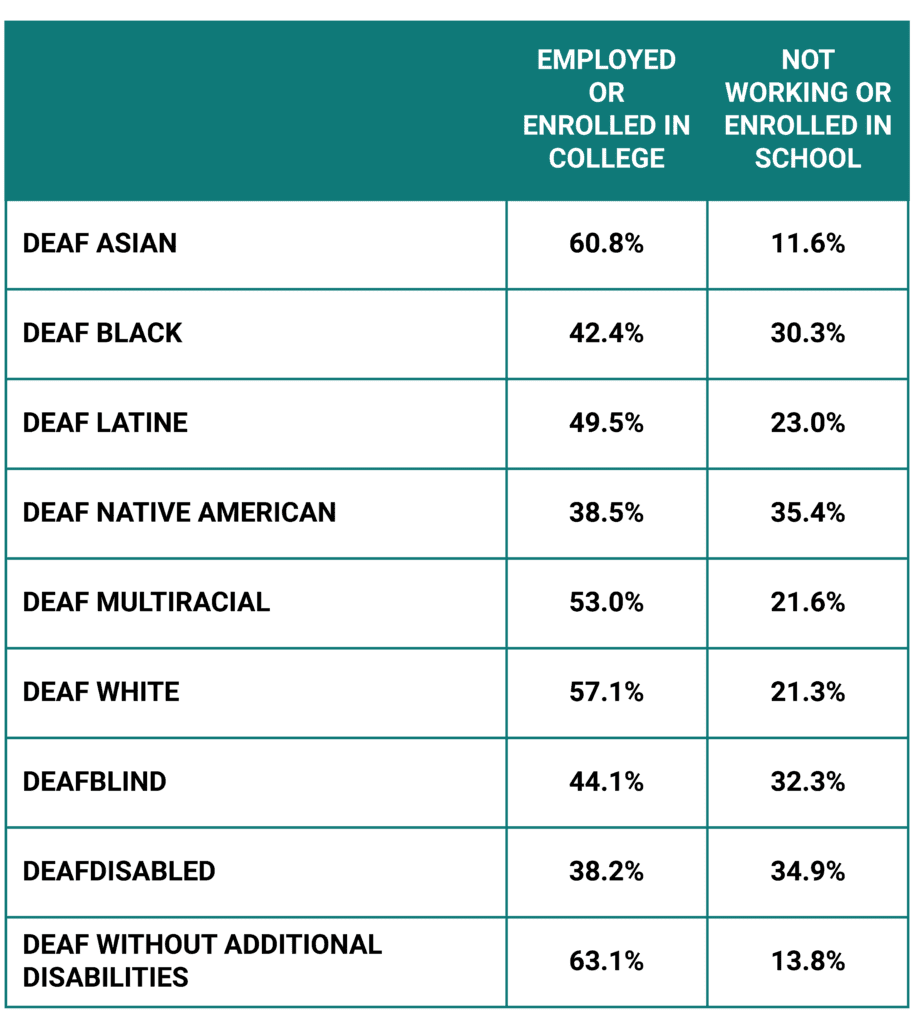
Please note that the percentages provided do not add up to 100%, as a portion of the population mentioned is still attending high school.
The data in this report comes from the American Community Survey (ACS), which is a yearly survey conducted by the U.S. Census Bureau. It gives us the most up-to-date information about education trends for deaf people in the United States. We used survey participants who identified as deaf or having serious difficulty hearing to represent the deaf population in our analyses. These estimates are based on a sample of 12,181 deaf people between the ages of 16 and 24 from 2017 to 2021. For additional details, please refer to our FAQs page that provides more information about the ACS data.
Recommended Citation
National Deaf Center. (2023). Deaf youth: Exploring who they are and their postsecondary journey.
University of Texas at Austin, National Deaf Center on Postsecondary Outcomes.
www.nationaldeafcenter.org/deafyouthdata.


